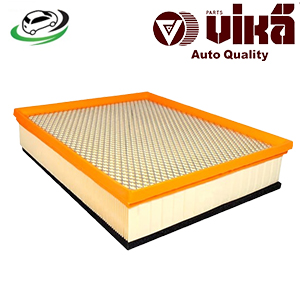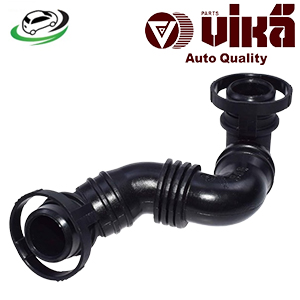-14%
Get Automatic vehicle Speed Sensor VW MK4/Beetle/Golf/Jetta/G-TI 1.6 1.8 1.9 TDI 01M927321B
The automatic vehicle speed sensor is a critical component in modern automotive systems. It measures the speed of a vehicle and provides this information to various vehicle control systems, including the transmission, engine control unit (ECU), and anti-lock braking system (ABS). Accurate speed measurement is essential for optimal vehicle performance, safety, and efficiency. Understanding the functionality, types, symptoms of failure, and maintenance of the vehicle speed sensor is crucial for vehicle owners and automotive technicians.
Functionality of the Speed Sensor
The primary functions of a vehicle speed sensor include:
- Speed Measurement: The speed sensor measures the rotational speed of the vehicle’s wheels, transmission output shaft, or driveshaft. This measurement is converted into a speed reading that is used by various vehicle systems.
- Data Transmission: The sensor sends speed data to the vehicle’s ECU and other control modules. This information is used to adjust engine performance, shift transmission gears, and engage safety systems.
- Transmission Control: In automatic transmissions, the speed sensor provides data to control shift points and optimize gear changes based on vehicle speed.
- Safety Systems: The sensor also plays a role in safety systems such as ABS and traction control, helping to prevent wheel slip and maintain vehicle stability.
Components of a Vehicle Speed Sensor
A typical vehicle speed sensor consists of the following components:
- Sensor Element: The sensor element is the part of the sensor that detects rotational speed. It can be either a magnetic or optical device, depending on the sensor type.
- Housing: The housing encases the sensor element and protects it from environmental conditions. It is usually made from durable materials such as metal or plastic.
- Connector: The connector is used to link the sensor to the vehicle’s wiring harness. It ensures that the sensor can transmit data to the ECU and other control modules.
- Mounting Bracket: The mounting bracket secures the sensor in place, ensuring proper alignment with the rotating component it is measuring.
Types of Vehicle Speed Sensors
Vehicle speed sensors come in various types, each suited to different applications:
- Magnetic Pickup Sensors: These sensors use a magnet and a coil to detect the rotation of a toothed wheel or gear. As the wheel or gear rotates, it creates a changing magnetic field that generates an electrical signal. This signal is then converted into a speed reading.
- Optical Sensors: Optical sensors use a light source and a photodetector to measure rotational speed. A rotating disc with alternating opaque and transparent segments passes between the light source and the photodetector, generating a signal that is converted into a speed reading.
- Hall Effect Sensors: Hall effect sensors use a magnetic field to detect the rotation of a gear or wheel. As the rotating component passes the sensor, it alters the magnetic field, generating a voltage signal that is proportional to the speed of rotation.
- Variable Reluctance Sensors: These sensors use a coil and a rotating ferromagnetic element to generate an electrical signal. The reluctance of the magnetic circuit changes as the element rotates, creating a signal that corresponds to the rotational speed.
Symptoms of a Failing Speed Sensor
Recognizing the signs of a failing speed sensor is essential for maintaining vehicle performance and safety:
- Erratic Speedometer Readings: If the speedometer displays fluctuating or inaccurate readings, it may indicate a problem with the speed sensor.
- Transmission Shifting Issues: A failing speed sensor can cause erratic or harsh shifting in an automatic transmission, as the sensor data is used to control shift points.
- Engine Performance Problems: If the sensor is not providing accurate speed data to the ECU, it can affect engine performance, including acceleration and fuel efficiency.
- ABS and Traction Control Malfunctions: A malfunctioning speed sensor can cause issues with the ABS and traction control systems, leading to reduced braking performance and stability.
- Check Engine Light: In some cases, a failing speed sensor can trigger the check engine light on the dashboard, indicating a problem with the vehicle’s speed measurement system.
Causes of Speed Sensor Failure
Several factors can contribute to speed sensor failure:
- Wear and Tear: Over time, the sensor’s components can wear out due to exposure to heat, vibration, and contaminants.
- Contamination: Dirt, debris, or moisture can accumulate on the sensor or its components, affecting its performance.
- Electrical Issues: Wiring problems, loose connections, or shorts in the sensor’s electrical circuit can cause it to malfunction.
- Physical Damage: Impacts or accidents can damage the sensor or its mounting, affecting its ability to measure speed accurately.
Maintenance and Replacement
Proper maintenance of the speed sensor involves regular inspections and timely replacements to ensure optimal performance:
- Regular Inspections: Periodically check the speed sensor and its wiring for signs of damage, wear, or contamination. This can be done during routine vehicle maintenance or when addressing other issues.
- Follow Manufacturer’s Recommendations: Adhere to the manufacturer’s recommended replacement intervals for the speed sensor. This information can be found in the vehicle’s owner’s manual.
- Replace as Needed: If any symptoms of a failing speed sensor are observed, or if the sensor is due for replacement based on mileage or condition, replace it promptly to maintain proper vehicle performance and safety.
Replacement Process
Replacing a speed sensor typically involves the following steps:
- Prepare the Vehicle: Ensure the engine is off and the vehicle is on a level surface. If necessary, lift the vehicle using a jack and jack stands to access the sensor.
- Locate the Speed Sensor: Identify the location of the speed sensor. It is typically mounted on the transmission, differential, or drive shaft.
- Remove the Old Sensor: Disconnect the electrical connector from the sensor and remove any mounting bolts or screws. Carefully pull the old sensor out of its mounting position.
- Install the New Sensor: Position the new sensor in the mounting location and secure it with the appropriate bolts or screws. Reconnect the electrical connector and ensure it is properly seated.
- Test the Vehicle: Start the vehicle and check for proper operation of the speedometer, transmission, and any related systems. Ensure there are no unusual noises or performance issues.
Importance of Quality Speed Sensors
Using high-quality speed sensors is essential for several reasons:
- Performance: Quality sensors provide accurate speed measurements, ensuring optimal performance of the transmission, engine, and safety systems.
- Durability: High-quality materials and construction enhance the sensor’s longevity, reducing the need for frequent replacements.
- Reliability: Reliable sensors ensure consistent data transmission and prevent potential issues with vehicle performance and safety.
- Cost-Effectiveness: Investing in a quality speed sensor can prevent costly repairs and maintain overall vehicle efficiency.
Follow us on Facebook for more parts.



